One of the most prominent bonds in human portraiture is that of mother and child, one that returns again each spring in Mother’s Day cards. The Smithsonian museums have a wealth of such art. Search "mother" in the collections and hundreds of thousands of records are revealed from portraits of Mother Theresa to drawings of Mother Goose. For centuries any artistic rendering of mother and child meant religious images of the Madonna and child. One of the oldest is a 17th-century etching of the Madonna with the Christ child on her lap holding a carnation.
The unbreakable bonds of a mother and her child seem to share a universal appeal across abstract, folk art, photography, sculpture and paint. At a time when the museums are closed due to the COVID-19 pandemic, the online collections at the Smithsonian—recently made all the more available with a new open access platform—offer myriad ways to explore and entertain. We sought out works of art honoring mothers and their children and here we present 16 of our findings.
The Madonna and Child by Jean Morin after Raphael
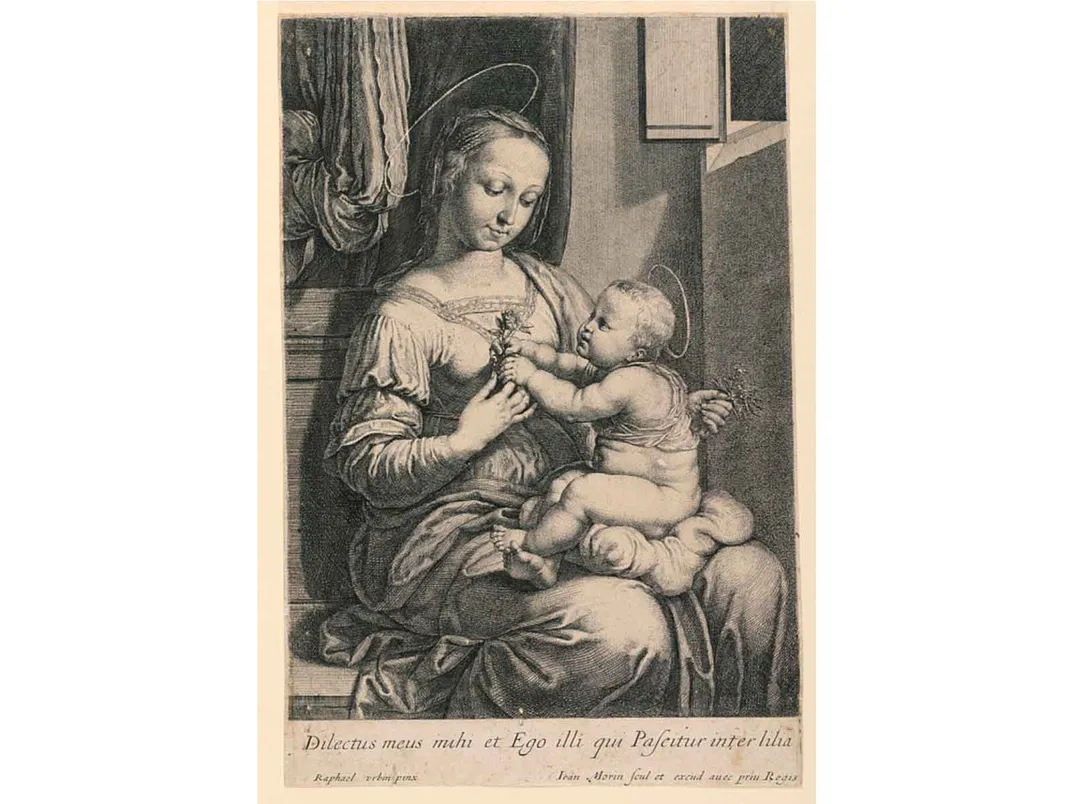
Italian Renaissance artist Raphael was well-known for his many images of the Madonna and child, but it was only in 1991 that scholars determined that the 1507 Madonna of the Pinks was actually a Raphael original and not a copy. The work, now in London’s National Gallery, launched a number of its own reproductions including this circa 1640 etching by the French artist Jean Morin (1605-1650) from the Cooper Hewitt, Smithsonian Design Museum in New York City. It was based on an earlier copy, known as the Pembroke Madonna by an unidentified artist. Morin inverted that image but kept the playfulness between the mother and child in their handling of a symbolic carnation.
Whistler’s Mother, Postage Stamp
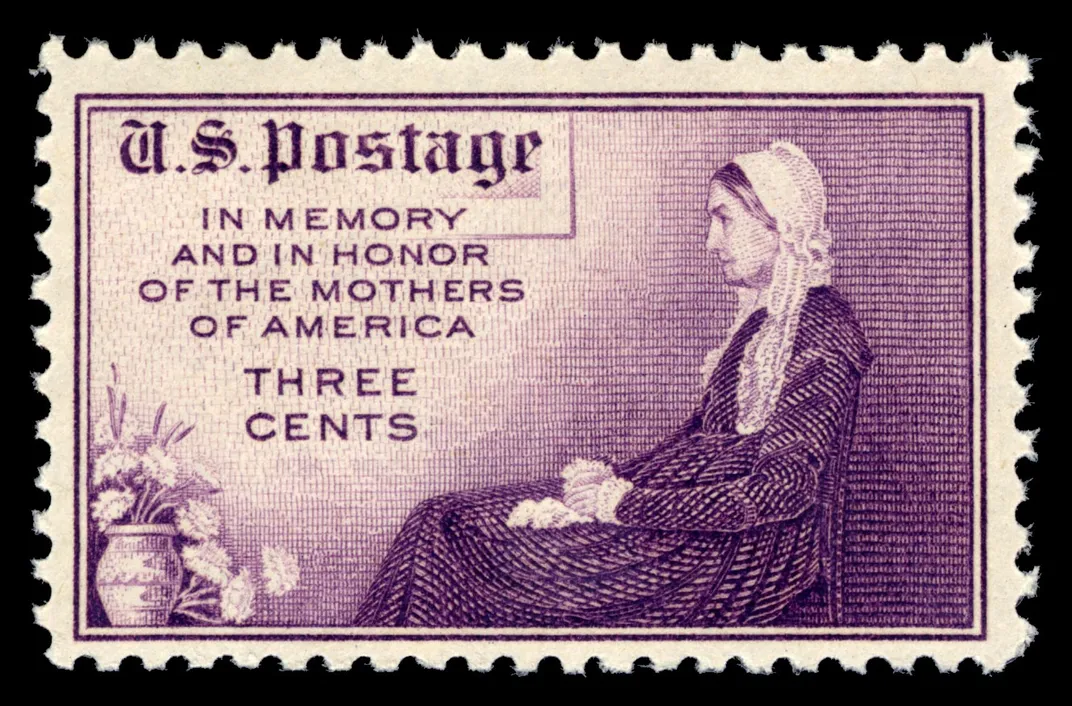
A special three-cent postage stamp “in memory and in honor of the mothers of America” issued by the U.S. Post Office in March 1935 and archived today at the National Postal Museum, drew on the familiar portrait profile known as “Whistler’s Mother.” James McNeill Whistler painted what might be his most famous image in 1871. At the time, his stern-faced mom, Anna McNeill Whistler was living with him in London. Whistler initially intended a full-length portrait; she literally wouldn’t stand for that, so she sat. Held by the Musée d’Orsay in Paris, the sentimental image has a strictly unsentimental title: Arrangement in Grey and Black No. 1. In this postage stamp, giving her the Mother’s Day salute, President Franklin Delano Roosevelt is credited with adding the dedication and designer Victor S. McCloskey of the Bureau of Engraving and Printing crafted the floral arrangement.
Gardner (Cassatt) Held by His Mother by Mary Cassatt
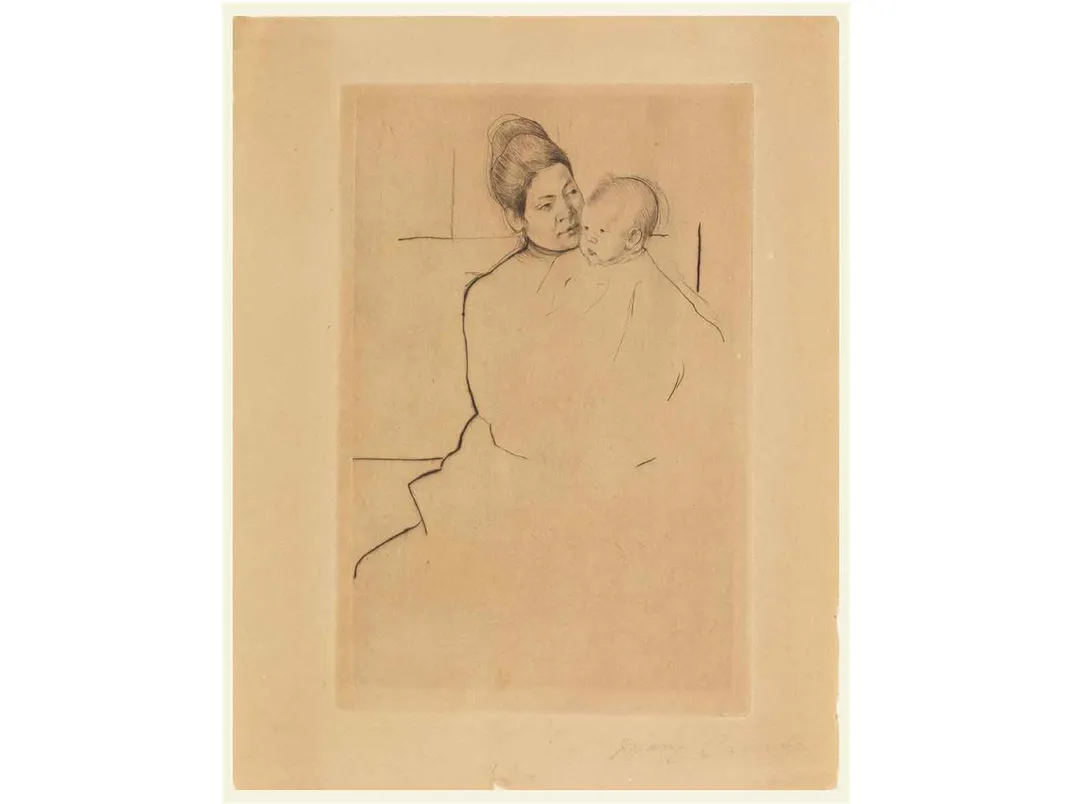
Mother and child portraits were practically the signature of American impressionist painter Mary Cassatt with nearly one-third of her entire output devoted to the theme. One of the earliest dated examples of this interest came with the portrait of her nephew Joseph Gardner Cassatt III, held by her sister-in-law Eugenie Carter. The quick drypoint sketch at the Cooper Hewitt, Smithsonian Design Museum, showed what was of interest to the artist—the faces of the two figures, with the rest only sketched in outline. The drawing would precede a few other portraits of the lad and his mother. It wouldn’t continue; the two women had a falling out over women’s suffrage in 1915.
Mother of Twins by Bamgboye
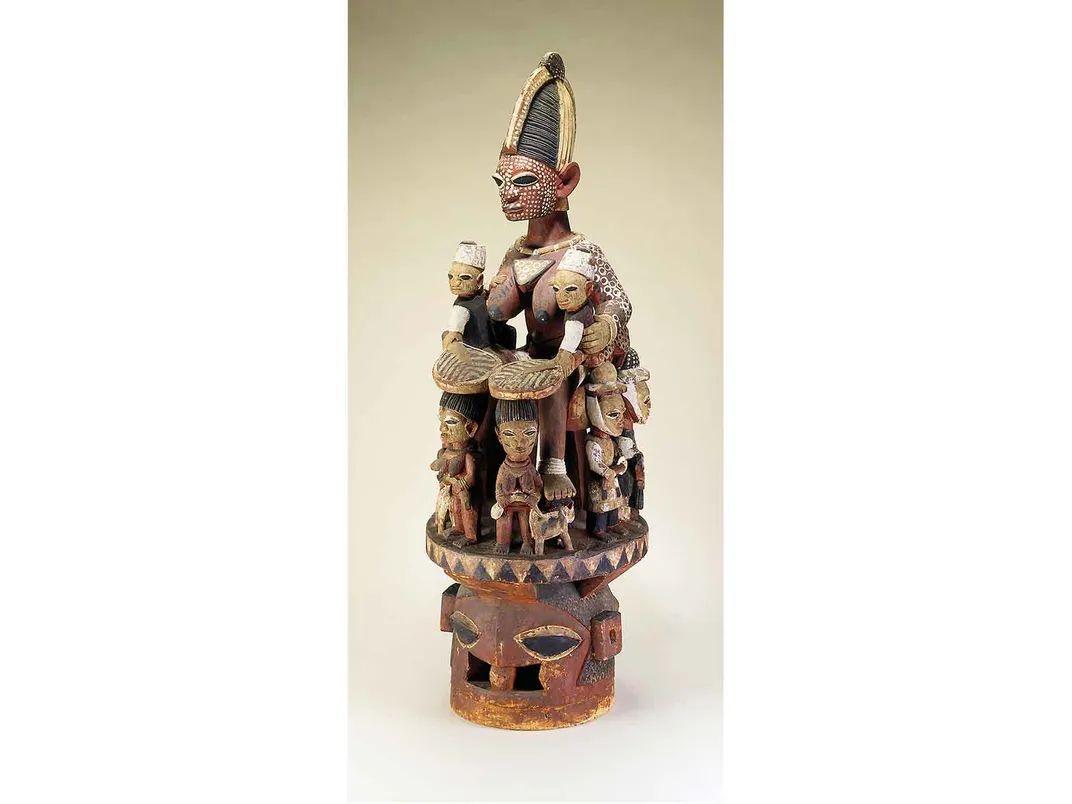
There is a whole lot going on in this elaborate helmet mask from the Ekiti State of Nigeria from the collections of the National Museum of African Art. But, worn at dances to honor Yoruba ancestors to promote fertility, this one is titled Iyaibeji or Mother of Twins. Certainly, the spotted-faced mother predominates in the early to mid-20th century work by Yoruba artist Bamgboye. She sits atop on a stool with two male figures on each knee, each of whom are holding giant fans. Elsewhere, among the six figures on the base, two hold reigns to rams, another nurses a baby and a male drums away. Sometimes motherhood feels like this.
Sotho Mothers and Children by Constance Stuart Larrabee
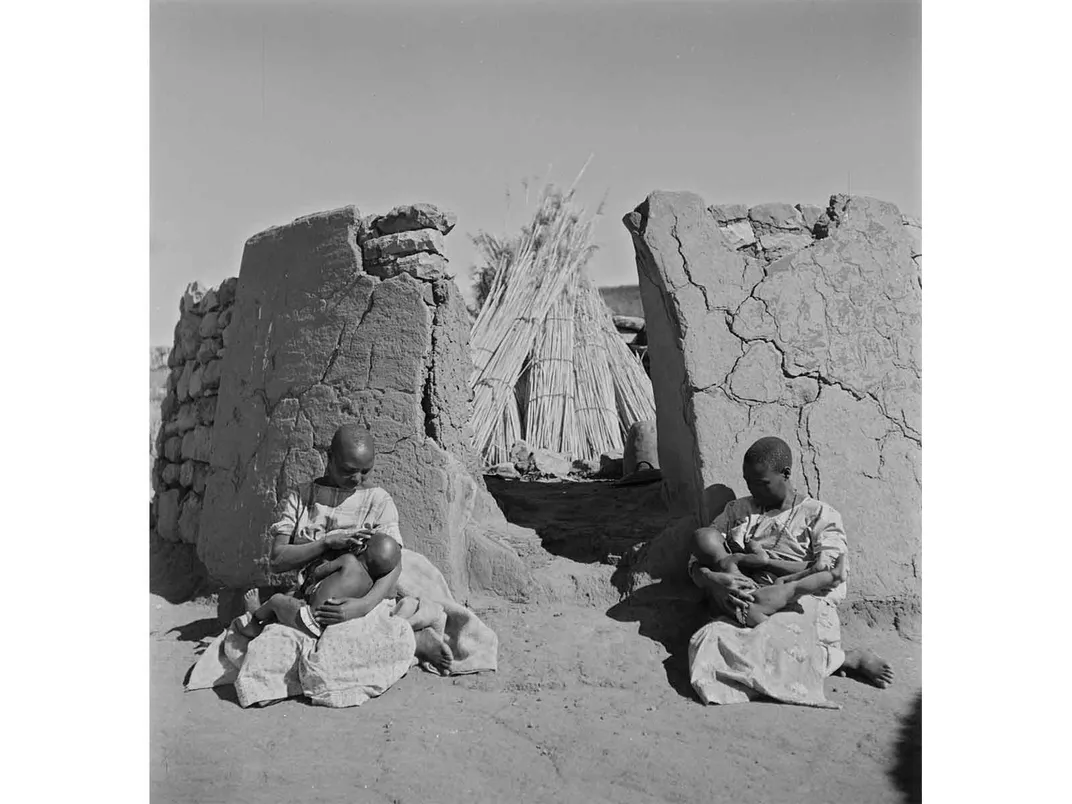
Born in England and raised in South Africa, photographer Constance Stuart Larrabee caught this image of a pair of mother and children in Basutolan—the present day Lesotho—as part of her lifelong work documenting tribal culture in South Africa. She had a portrait studio in Pretoria and was the official photographer of the 1947 visit of the British royal family to the continent. Larrabee was drawn to indigenous cultures and elegantly captured these mothers nursing their children outside a round, roofless clay house where inside, grass is bundled and stacked. Larrabee's image is held by the National Museum of African Art in the Eliot Elisofon Photographic Archives. When the National Party took power in 1948 and instituted apartheid, the photographer left South Africa for America the following year.
Mother and Children by Jacob Kainen
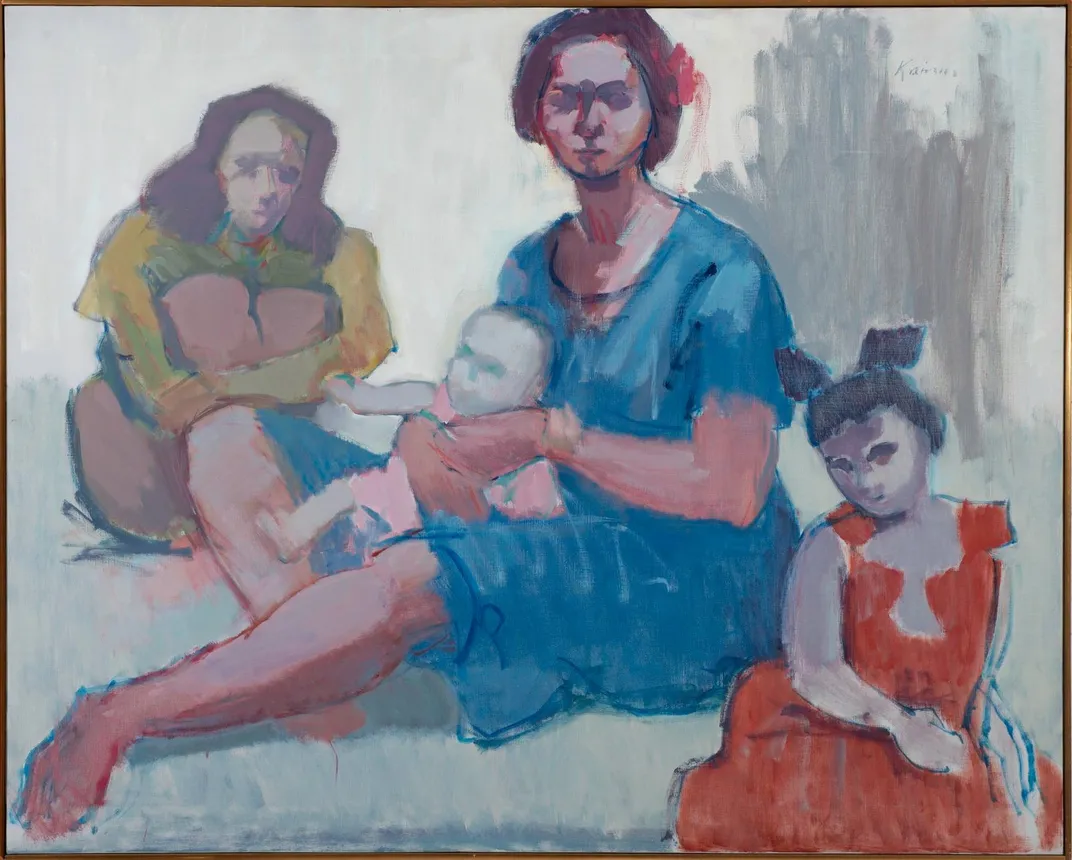
Painter and printer Jacob Kainen (1909-2001), shifted his artistic approach from abstraction to social realism and back in his long career. He did so mostly in Washington D.C., where he curated and greatly grew the Smithsonian Graphics Art department and helped kickstart the Washington Color School by introducing Morris Louis to Kenneth Noland. Kainen’s association with Arshile Gorky in New York may have led to this 1965 portrait of a mother and three children, not just in subject, but also in the way he used paint. “He taught me the importance of composing a painting,” Kainen said in 1982, “the importance of the feeling of pigment, the importance of one edge of an area against another.” Kainen's Mother and Children is housed at the Anacostia Community Museum.
Black Panther mother and her newborn son, Baby Jesus X, San Francisco, California, No. 125 by Ruth-Marion Baruch
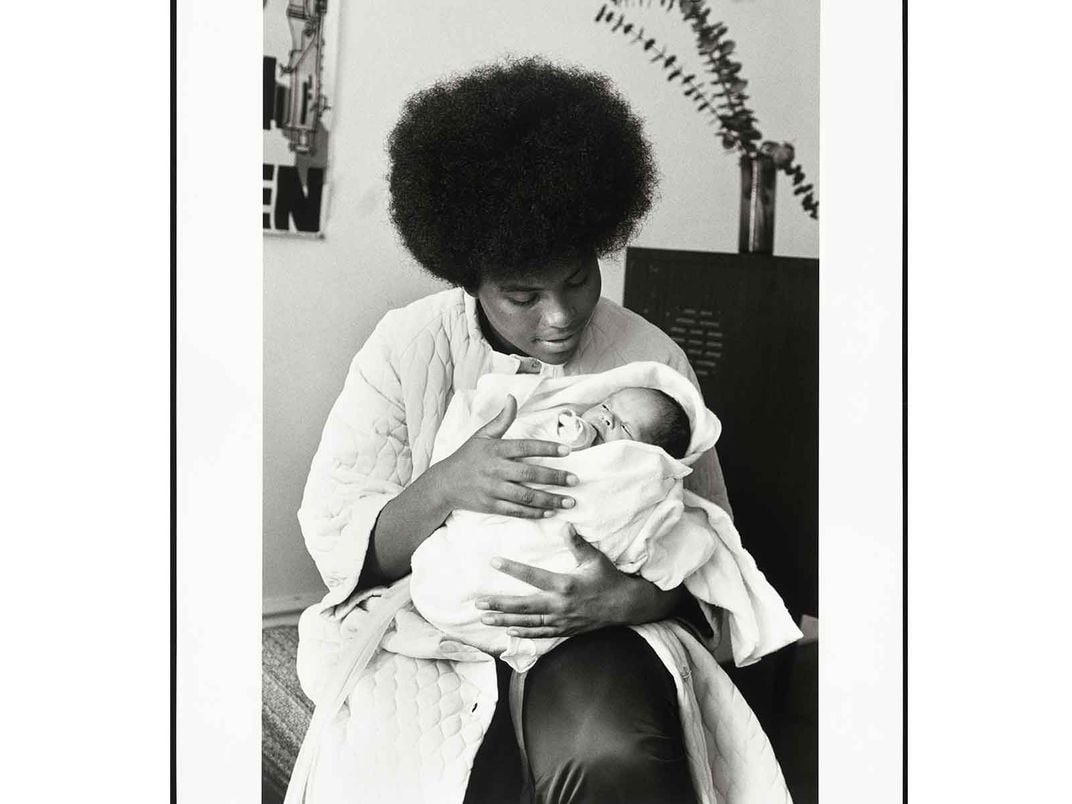
The 1968 portrait of mother and son, shot in the San Francisco home of Eldridge Cleaver, the political activist, writer and leader of Black Panther Party, is one of several of the young family of David Lewis that was part of a portfolio of works by Ruth-Marion Baruch and her husband Pirkle Jones, A Photographic Essay on the Black Panthers. Baruch had introduced herself to Kathleen Cleaver in 1968. Concerned about the group’s portrayal in the media, the photographer wanted to present a more balanced view. The German-born Baruch was in the first class of photography offered by the California School of Fine Arts, whose faculty included Ansel Adams, Minor White, Edward Weston and Dorothea Lange. The image can be found in the collections of the National Museum of African American History and Culture.
Mother and Child by Mark Power
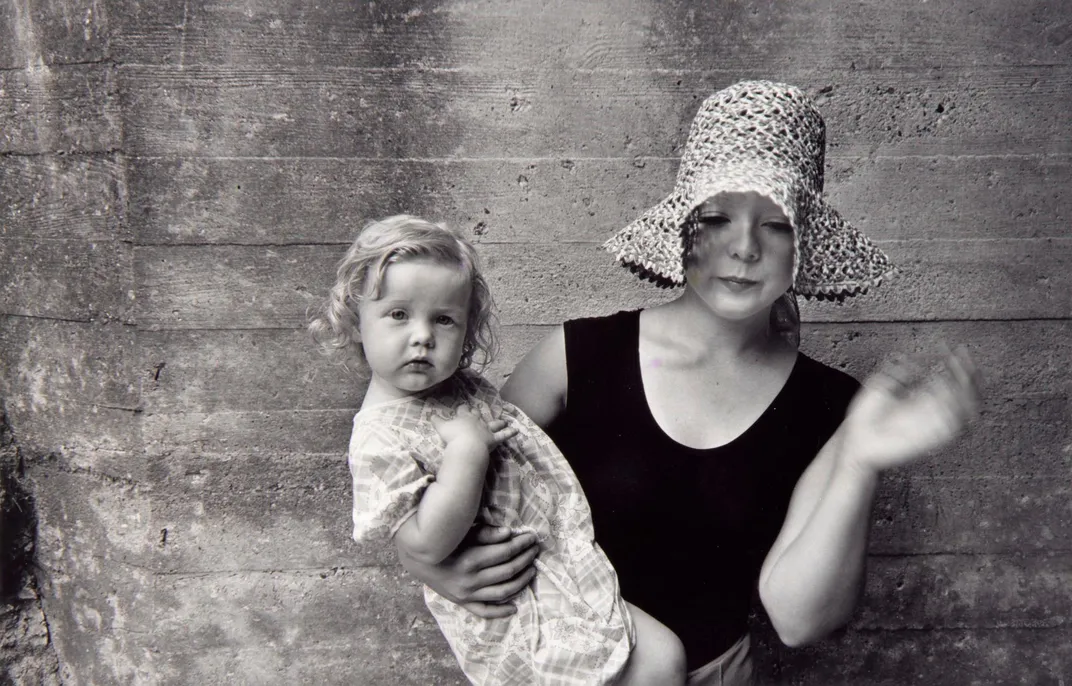
The guileless toddler and be-hatted mother in this photograph from the Smithsonian American Art Museum are not identified, but they exemplify a quote photographer Mark Power once made: “I always love photographing children. Adults have learned to put on a photographic presence; children haven’t learned that.” And while in many photos of mother and child it’s the young one who squirms, here the daughter is absolutely calm while the mother waves an arm in a blur. Born in Washington, D.C. and living for a spell on a farm in Leesburg, Virginia, Power founded D.C.’s first photography gallery, the long-gone Icon, and taught for 27 years at the Corcoran School of Art before moving to England (where there is another famed photographer named Mark Power).
Mother and Child by Mary Louise Lopez
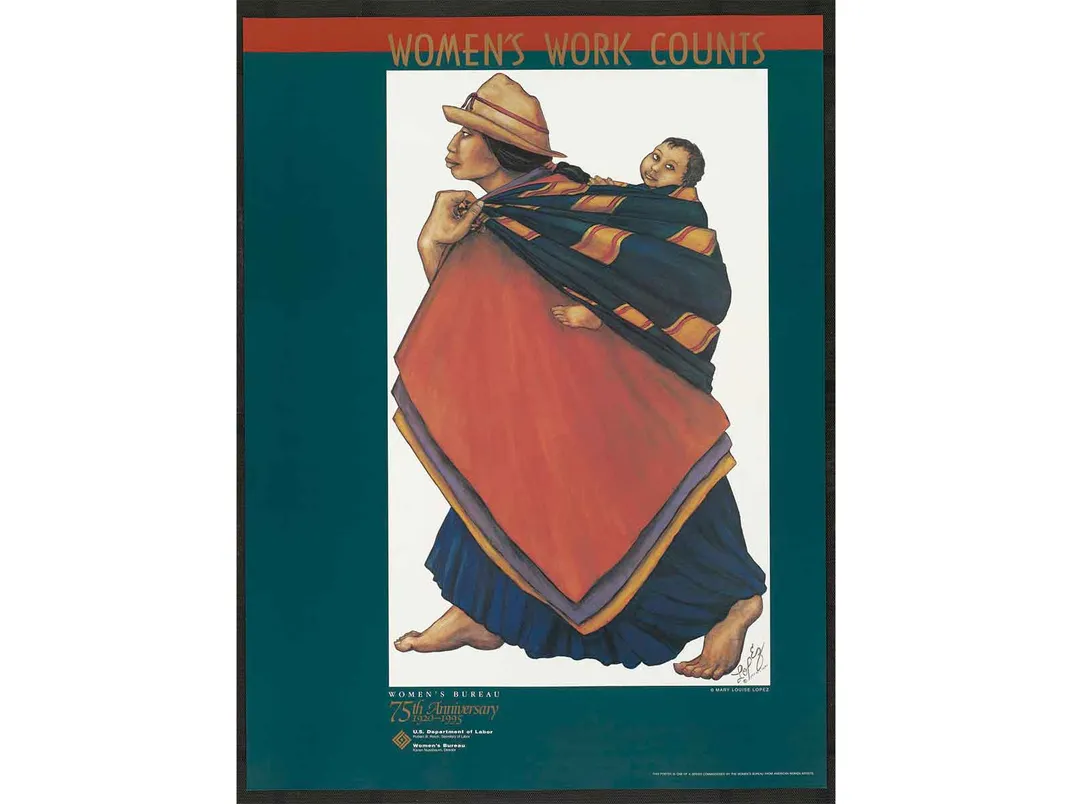
Having traveled throughout Mexico, Central America, South America and the American Southwest, the work of San Antonio artist Mary Louise Lopez has a message: “Here are a people with a sense of strength, pride and serenity in themselves and their heritage. They represent the best that is in all of us.” With a caption of “Women’s Work Counts,” her oil of a Native American woman with baby on her back was one of nine works commissioned for a set of 1995 posters celebrating the 75th anniversary of the creation of the Women’s Bureau of the U.S. Department of Labor. “I just have great admiration for these people,” Lopez said at the time. “It takes so much to live and survive.” The poster is now in the Women's History collections of the National Museum of American History. The Women’s Bureau marks its 100th anniversary June 5, 2020.
Young Mother by William H. Johnson

This striking and vividly colorful portrait of mother and child is one of more than a thousand paintings held at the Smithsonian American Art Museum by the noted American painter William H. Johnson. The cache of works had been nearly destroyed in 1956 because of an inability to pay storage fees. A foundation bought the work and donated it to the Smithsonian 11 years later. Johnson died in 1970 in a New York state hospital, where he had spent his final 23 years in obscurity. Born in South Carolina, Johnson studied in New York, Europe and North Africa before returning home in 1944 to make observational art like this. “Even if I have studied for many years and all over the world,” he once said,“I still have been able to preserve the primitive in me.”
Mother and Child by Henry Moore
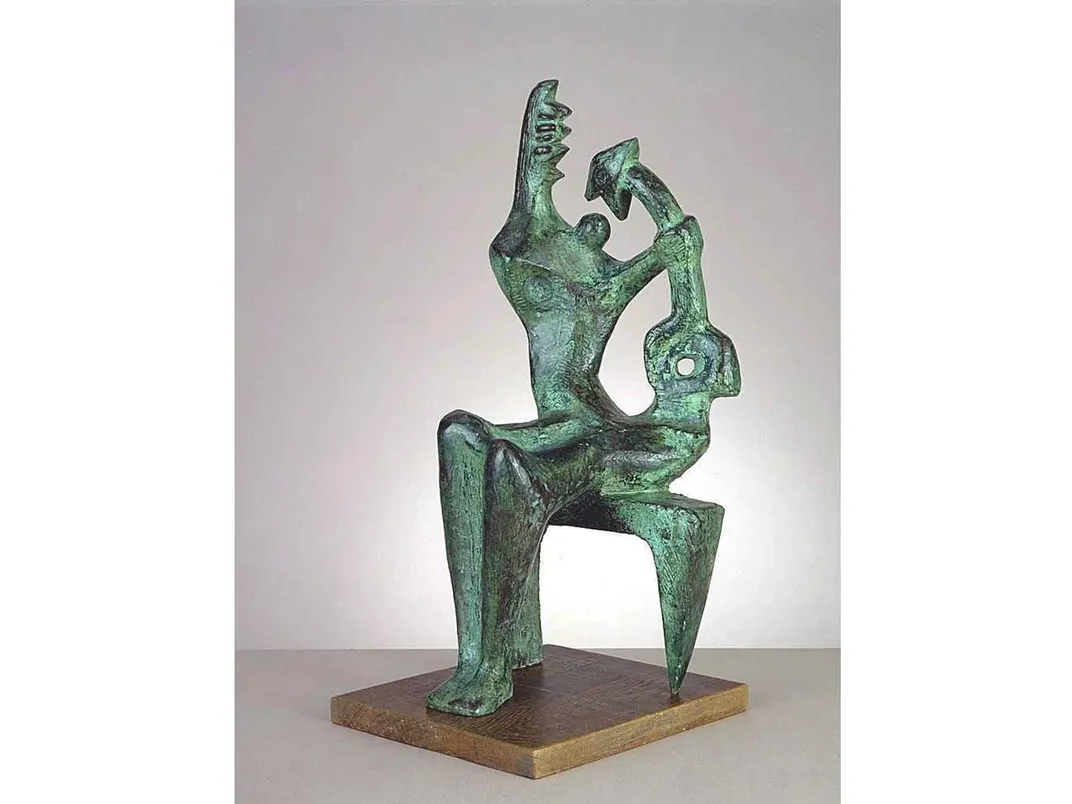
British modernist sculptor Henry Moore (1898-1986) tackled the mother and child theme numerous times in his career. While those he completed during World War II reflected a more nurturing role from the mother, this 20-inch bronze at the Hirshhorn Museum and Sculpture Garden focuses more on the aggressive needs of the child as it seems about to attack the mother's breast with its bird-like beak. For her part, spiky-headed mom holds back the child as if in a stranglehold. “I wanted this to seem as though the child was trying to devour its parent,” Moore said in 1974, “as though the parent, the mother had to hold the child at arm’s length.” Occasional confrontation is part of motherhood as well, though usually not so violently.
Mother and Child by Paul Peter Piech
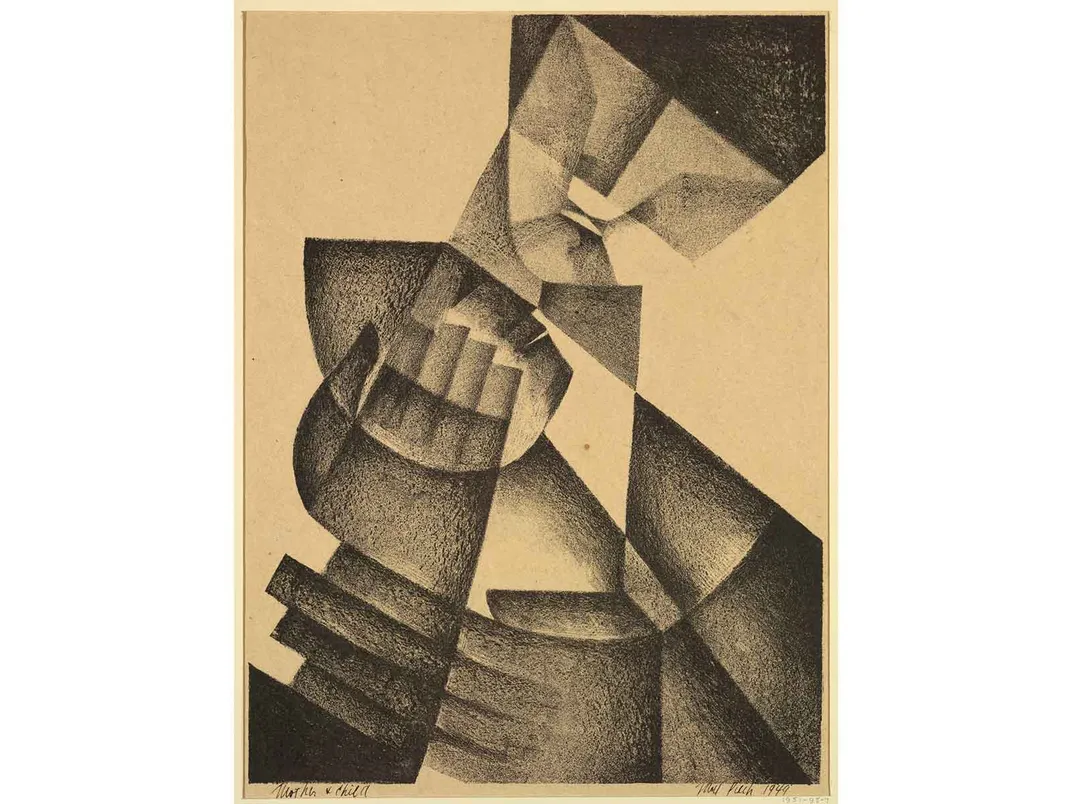
Brooklyn-born printmaker and graphic designer Paul Peter Piech (1920-1996) is best known for his striking linocuts on political and human rights issues. His pieces often used blocks of expressive text, with activist slogans or long quotes from figures like Martin Luther King, Desmond Tutu and JFK. His bold works also expressed enthusiasm for jazz and literary giants from Goethe to Blake. But for his 1949 lithograph Mother and Child, from the Cooper Hewitt, he eschewed the words for a monochromatic domestic abstraction. And just as he didn’t use words for the work, he also stepped away from bold black and white linocuts for more subtle shadings.
Mother and Child by Pitseolak Niviaqsi
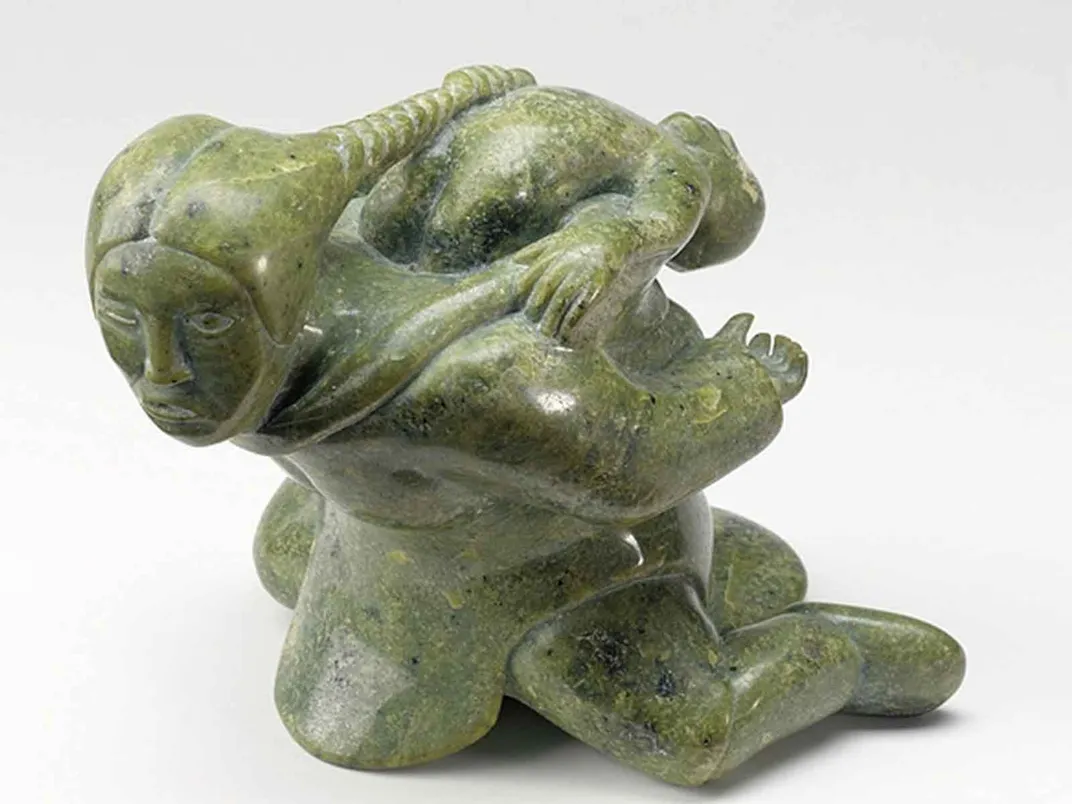
Kinngait, the Inuit hamlet formerly known as Cape Dorset, is located near the southern tip of Baffin Island in the Qikitaaluk Region of Nunavut, the newest, largest and most northerly territory in Canada. As remote as it is, Kinngait has been known as the capital of Inuit art and printmaking, with carving the community’s main economic activity. Pitseolak Niviaqsi (1947-2015) was part of establishing that legacy. A printmaker as well, his work was in nearly every year’s Cape Dorset Annual Print Collection from 1975 to 2011. This two-foot-high work of carved and polished serpentine, from the National Museum of the American Indian, made in 1983-84, shows a kneeling mother carrying on her back a playful or otherwise uncooperative child, who is leaning back and yanking mom’s braid.
Mother West Wind by Bertha Lum
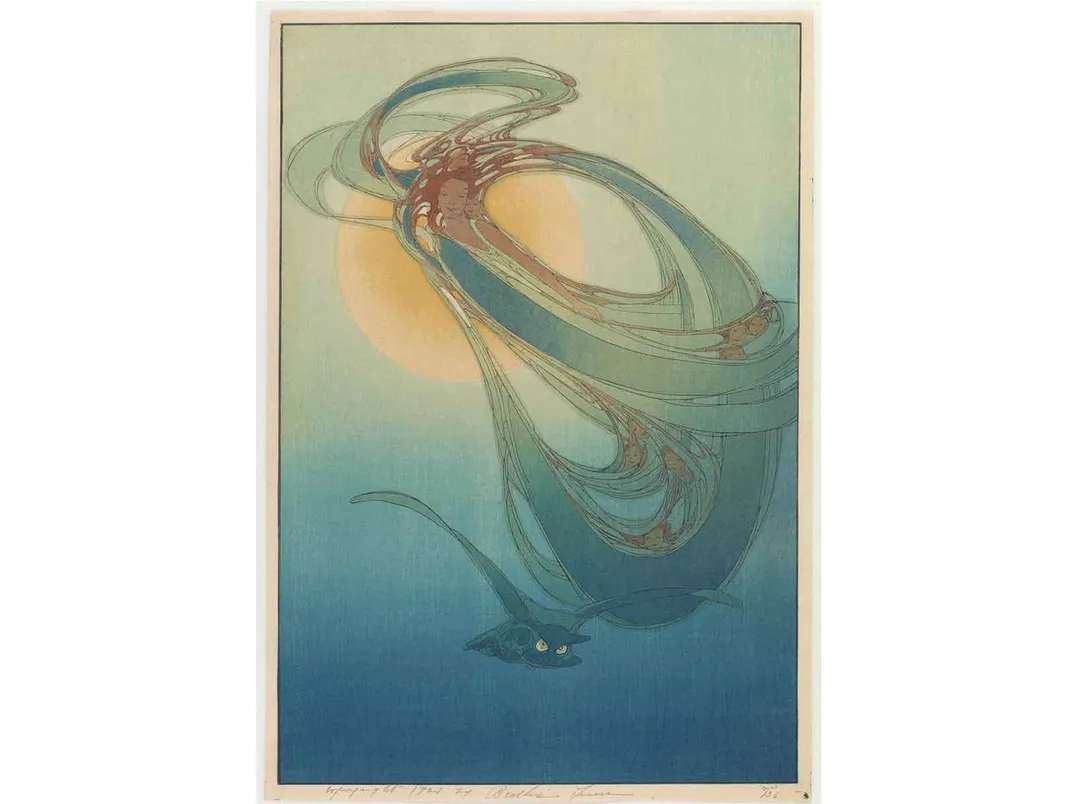
Like Charles Lang Freer, the founder of the Freer Gallery of Art, Bertha Lum was an American who became enamored of Asian art. The Iowan traveled to Japan several times to learn the traditional methods of woodcuts there known as ukiyo-e, and became so adept that she was the only female artist to exhibit at the Tokyo International Exhibition. Credited with helping to popularize the Japanese and Chinese woodblock print outside of Asia, Lum eventually moved to China for 30 years to live and work. She died in Italy in 1954. Her 1921 work, held by the National Museum of Asian Art, drawing on art nouveau forms popular at the time, depicts an elemental matriarch from Japanese myth swirling in the moonlight, with babies in her wake, as an owl flies below.
Mother Feeding Children by Eddie Arning
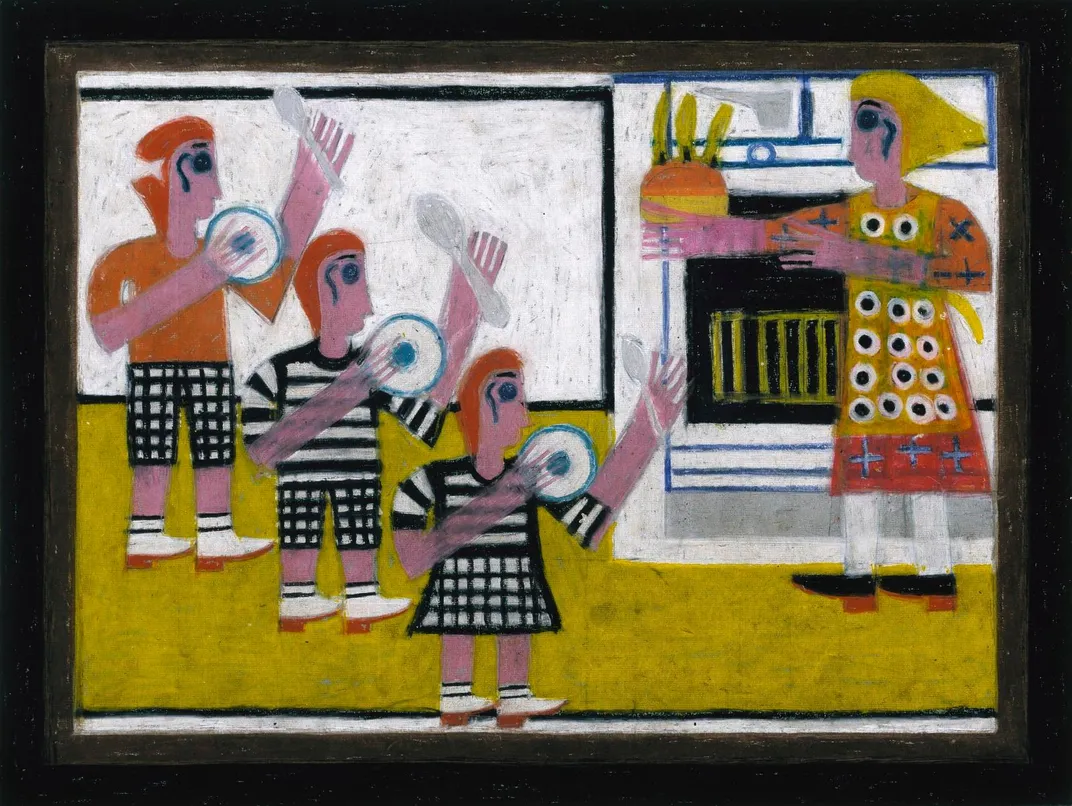
A chief duty of motherhood is making sure the children get enough to eat, and the trio in this 1973 work by Eddie Arning, from the Smithsonian American Art Museum, certainly shows an appetite for whatever mom is about to serve. Like many of the works of the self-taught Texan, Arning fills the picture with color from edge to edge, using oil pastel crayons. Born in 1898, Arning was sent to a mental institution as a young man and began his art in 1964, 60 years after entering. Within a decade, he had completed more than 2,000 works. This was among his last; he stopped drawing in 1974, a year after being forced to leave the institution. Arning died in 1993.
Mother & Daughter by Mitchell Siporin
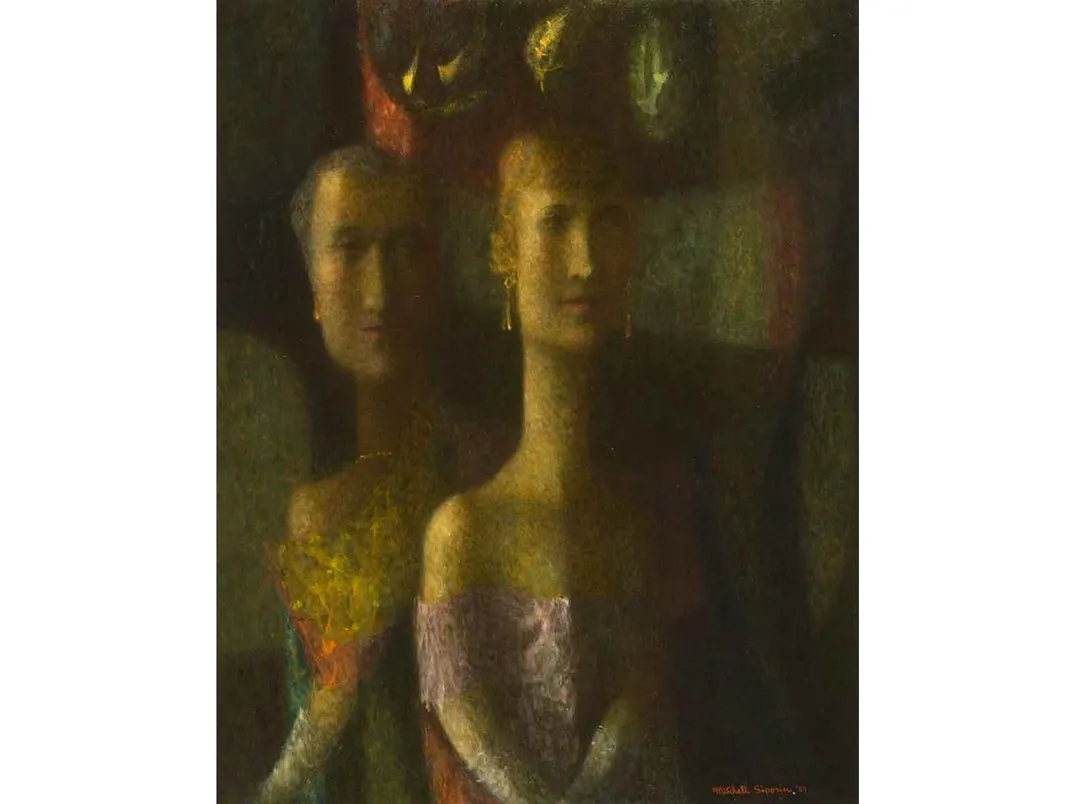
Many artistic images of motherhood show babies or small children, but what about the bond between mother and grown daughter? That’s the focus of this shimmering 1951 painting from the Hirshhorn by social realist painter Mitchell Siporin, who grew up in Chicago and who took part in the Works Progress Administration becoming an accomplished muralist before founding the Department of Fine Arts at Brandeis University. The women in this oil painting seem dressed for a big event. Besides the family resemblance of handsome faces and long necks, they also seem to share an interest in fancy headgear. Siporin died in 1976, but his own daughter Rachel Siporin is a painter in Connecticut.
/https://tf-cmsv2-smithsonianmag-media.s3.amazonaws.com/filer/f2/43/f2436fc0-c59a-4f91-bf87-b46f83f93533/my_post_1.png)
:focal(1019x247:1020x248)/https://tf-cmsv2-smithsonianmag-media.s3.amazonaws.com/filer/1f/0e/1f0e9b9c-11b0-43c6-90ea-acee8f35de85/testing12.png)
/https://tf-cmsv2-smithsonianmag-media.s3.amazonaws.com/accounts/headshot/RogerCatlin_thumbnail.png)
/https://tf-cmsv2-smithsonianmag-media.s3.amazonaws.com/accounts/headshot/RogerCatlin_thumbnail.png)